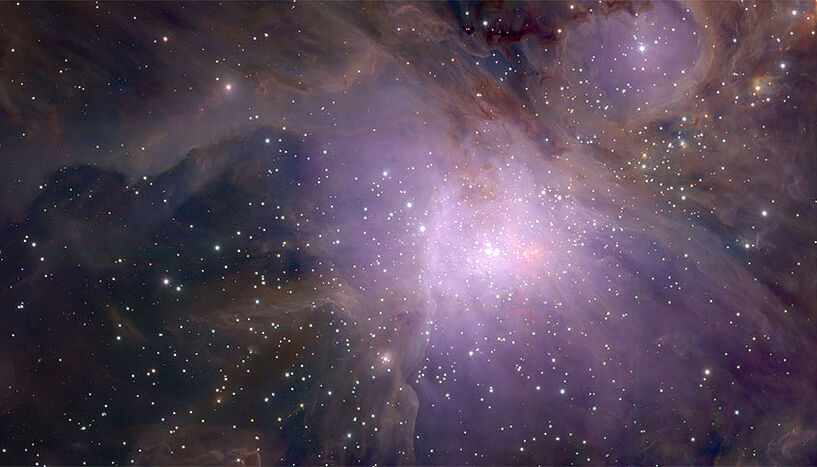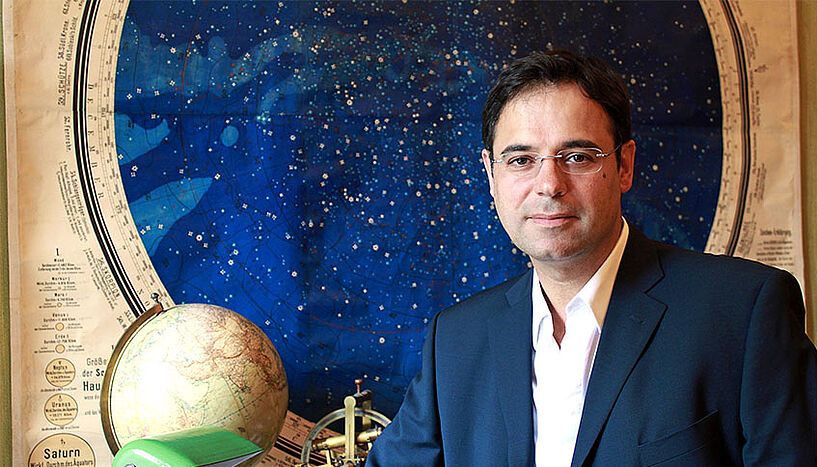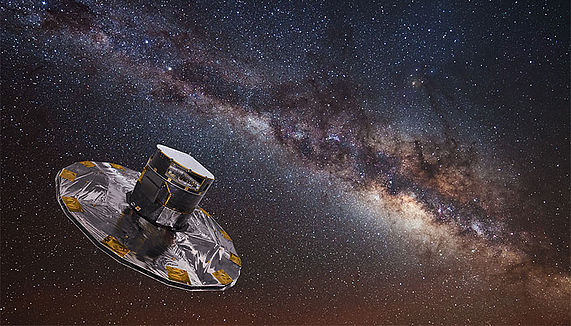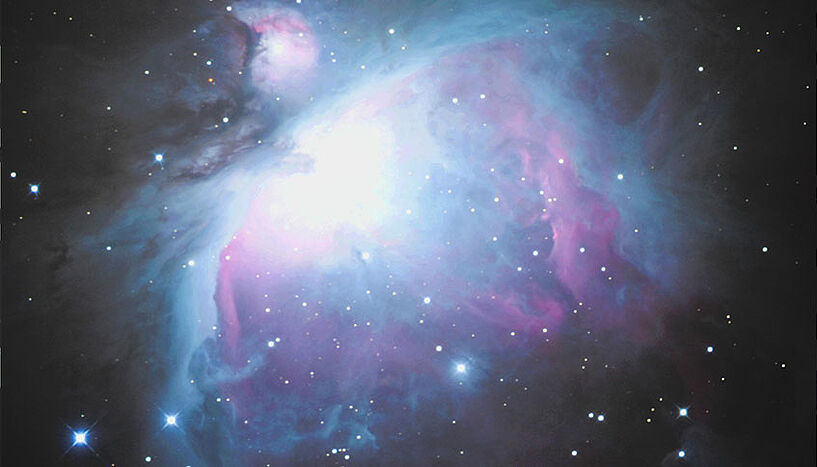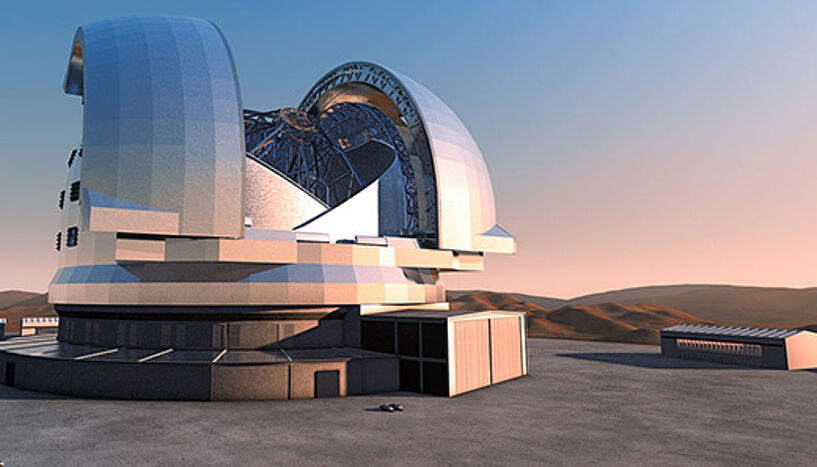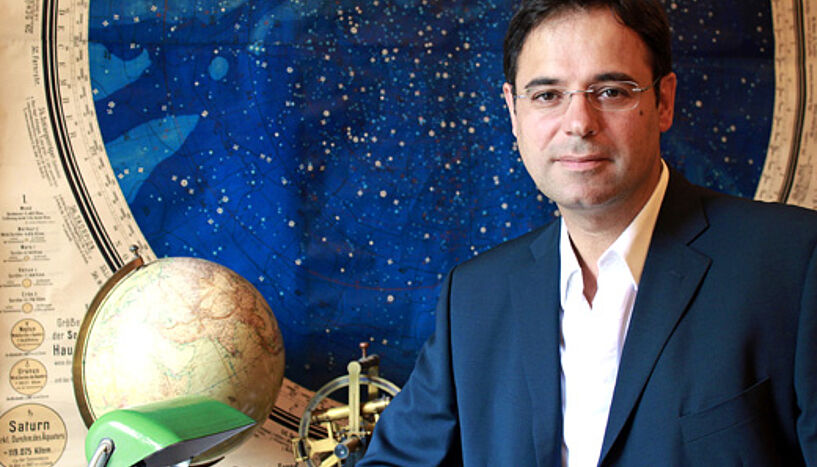How stars are born
| 05. April 2017500 hours of observation at the European Southern Observatory (ESO) in the Atacama Desert: an outstanding opportunity for astronomers João Alves and Stefan Meingast to explore young stars with their ESO-project VISIONS, an international search for our cosmic origins.
"How does nature convert diffuse clouds of gas into stars, and eventually into planets and life?" asks João Alves from the Department of Astrophysics, project leader of VISIONS. VISIONS is a large observational study that will target all the nearest stellar nurseries to Earth observable from the Atacama Desert in Chile. Astronomers have found that stars and planets form deep inside giant clouds of gas and dust, hidden from observation at visible wavelengths, but revealed at infrared wavelengths. "This deep and wide infrared survey is designed to provide many answers to basic questions. It's a search for our cosmic ancestry and a search for context in our Milky Way," says Alves. "If you understand how nature does it here, you know how she does it across the universe."
The technical challenges
About a little more than a decade ago an investigation of this size was simply not possible. In his doctoral thesis, Stefan Meingast from the Department of Astrophysics developed techniques to reduce and analyse wide-field images coming from the new survey ESO telescopes, like the VISTA telescope in Paranal, Chile. Few people know that raw images from the state-of-the-art telescope are very noisy, colourless and not much to look at. "This is normal for scientific astronomical observations because we want to measure the brightness of objects that are hundreds of times fainter than the night sky itself", explains Meingast, "so we are always working on the limit of the noise. For my PhD I developed a way to optimally reduce massive data sets and optimise them for our specific goal. This first study was called 'Vienna Survey in Orion (VISION)' and was the pilot study for our VISIONS project. We proved that we had the know-how to take on a large international study."
A larger view
One of the best known stellar nurseries lies in Orion, including the well-known Orion Nebula, the closest birthplace of very massive stars. Massive stars rule the ecology of galaxies and produce the heavy elements, like iron in our blood. "That is why everybody looks at Orion, us included", says Alves: "but until now we were not able to have the full view of the star-forming cloud because infrared cameras were too small, and this limitation has been biasing our view of star formation."
The Gaia satellite also measures the movement of stars in the Milky Way. As it is an optical telescope it cannot see inside the dark clouds of gas, the location where the baby stars Alves and Meingast are interested in reside. With VISIONS they will observe in the near-infrared and see through the thick dust to be able to image young stars nurseries. (Photo: ESA/ATG medialab; background: ESO/S. Brunier)
In VISIONS, the astronomers will use the ESO wide-field survey telescope VISTA to observe not just Orion but six of the nearest stellar nurseries within 1,500 light-years from Earth, namely Ophiuchus, Pipe Nebula, Lupus, Corona Australis and Chamaeleon-Musca. "We will have the unique possibility to compare them in a robust way for the first time, enabling us to understand the role of the interstellar environment." These regions will be observed twice per year for the duration of the survey, to allow the scientists to measure the motions of young stars still buried in their parental cloud, hidden from optical wavelengths.
Thousands of baby pictures and first steps
During the VISIONS survey astronomers will take many pictures of infant stars. "With 500 hours of observing time we will gather tens of thousands of pictures of baby stars", says Meingast. The astronomers will take images of each stellar nursery every six months for the next three years. "The idea is to see how baby stars move and to observe their first steps. Their movement is going to be tiny, but we will be able to measure it and infer how stars leave their parental cloud and become members of the Milky Way", the astronomers explain. One aim of the project is to figure out the evolutionary phases of baby stars, from the womb to stellar adolescence: "We can't wait millions of years to see the development of a baby star. Instead, we take as many pictures as possible of young stars and try to reconstruct the movie of their early evolution. This is why we need a large sample and a lot of observing time at ESO", explains Meingast.
Why should we care?
In three years, when the project is finished, VISIONS will provide a complete survey of star formation in our galactic neighborhood. The survey will feed the next generation of telescopes, such as the ESO Extremely Large Telescope (ELT) and ALMA, with new objectives for star and planet formation studies. But why is this so important? "We have a decent chance at breaking the code of star formation," João Alves concludes, "and take substantial steps towards a predictive theory of star formation – one of the largest challenges in modern astrophysics. To know how stars form means, on the one hand, understanding how galaxies formed and evolved, and on the other, understanding how planets form and how common they are in our galaxy."
The international ESO-project "VISIONS – The search for our cosmic ancestry", led by Univ.-Prof. João Alves and Stefan Meingast from the University of Vienna, was launched on 1 April 2017 and will run until 2020.

